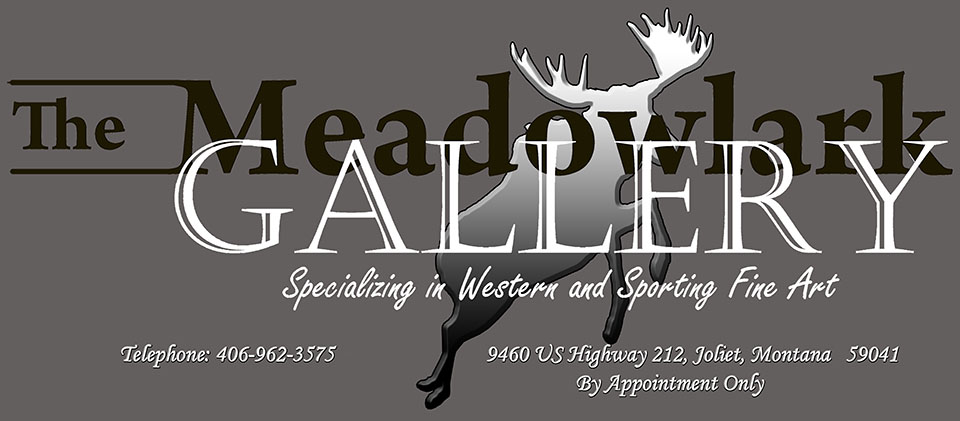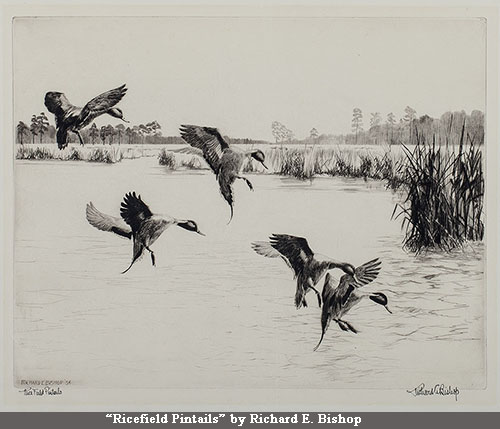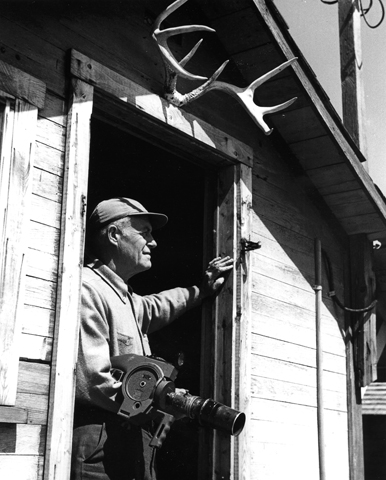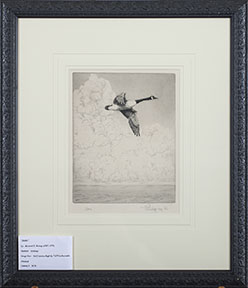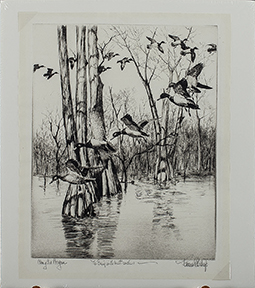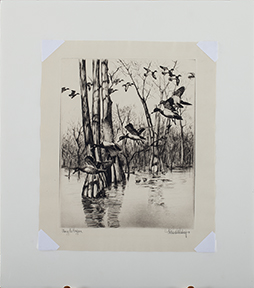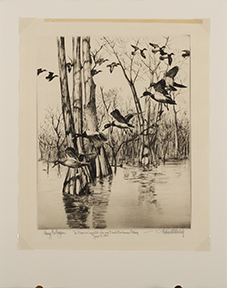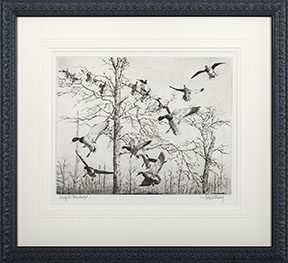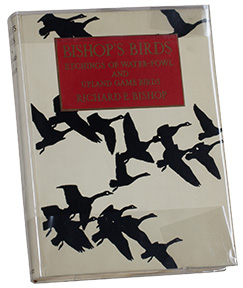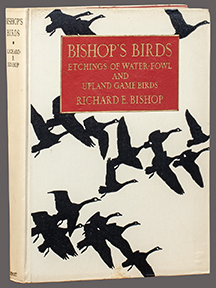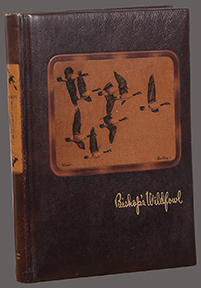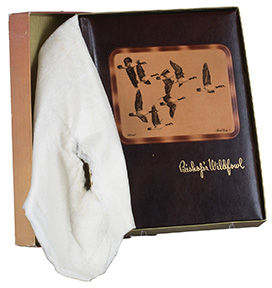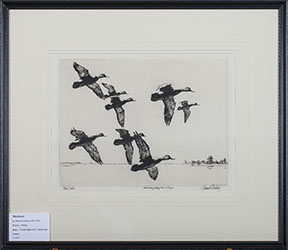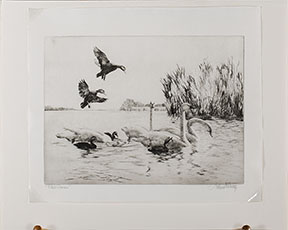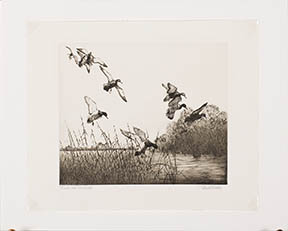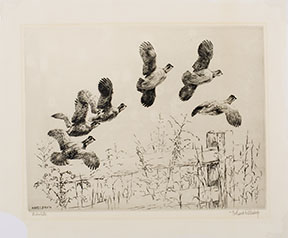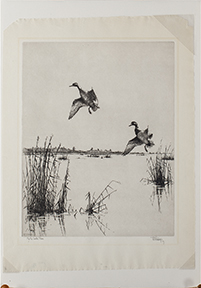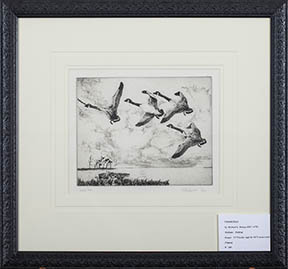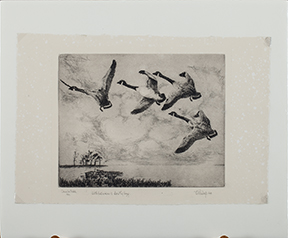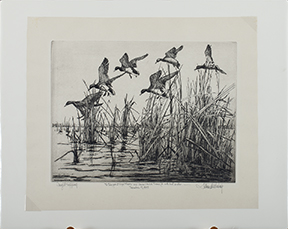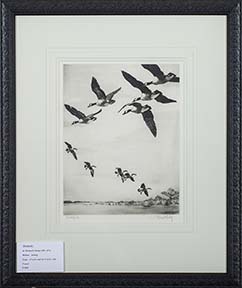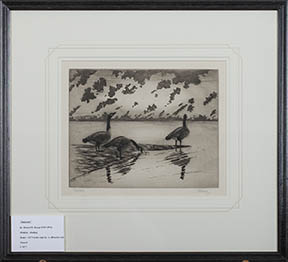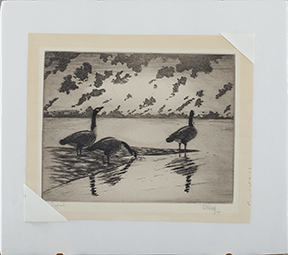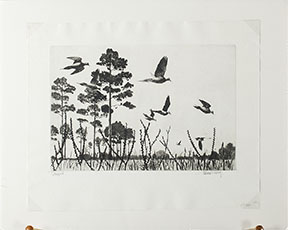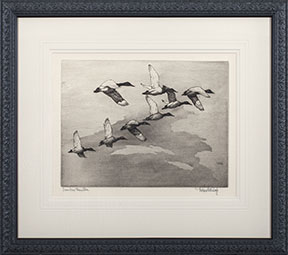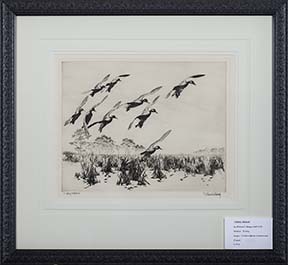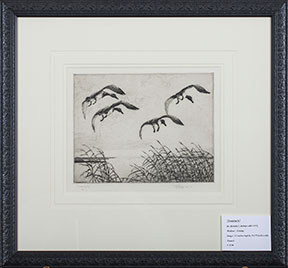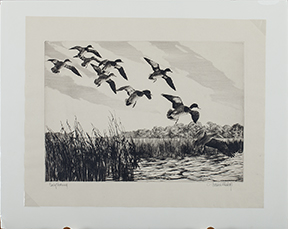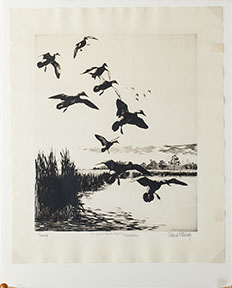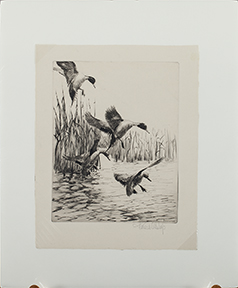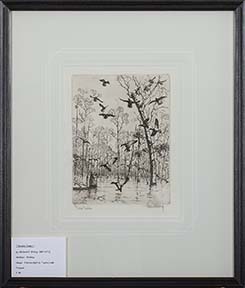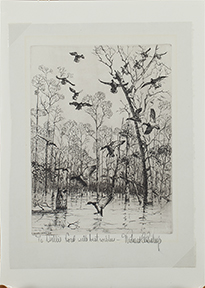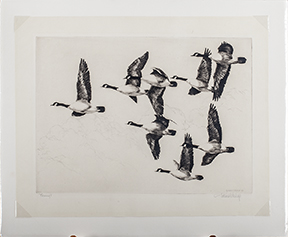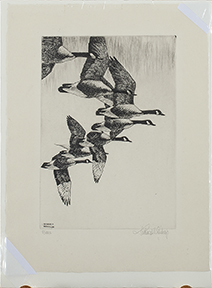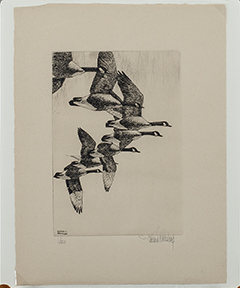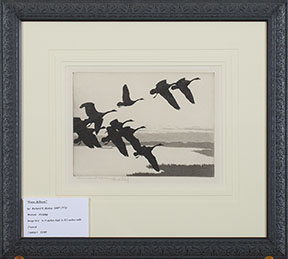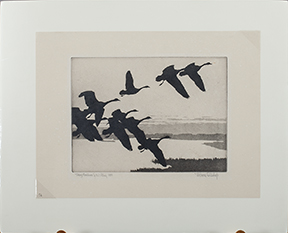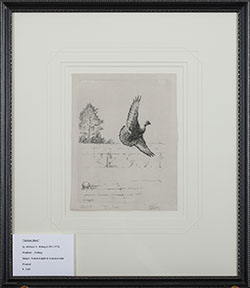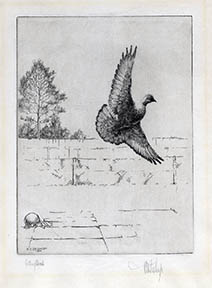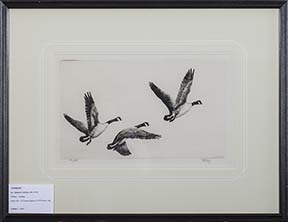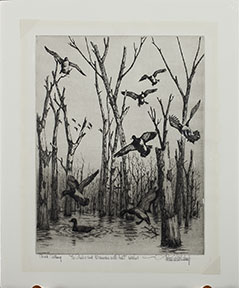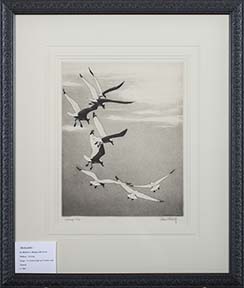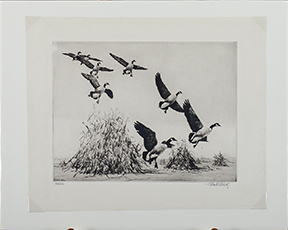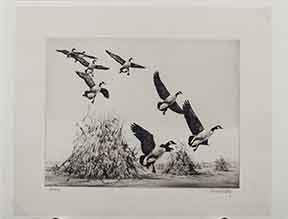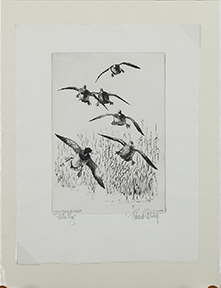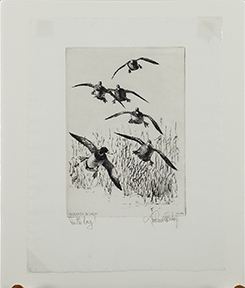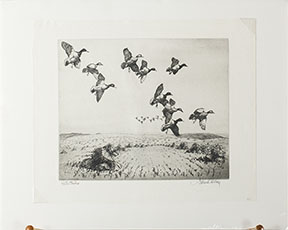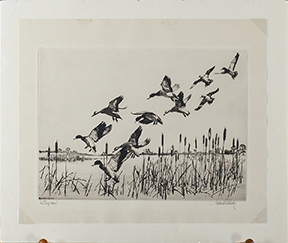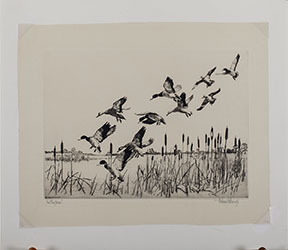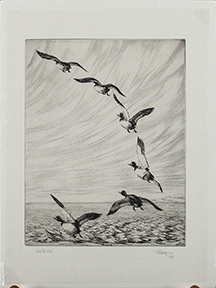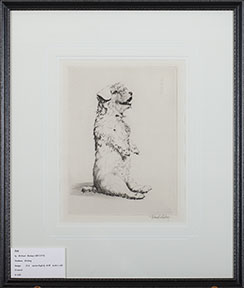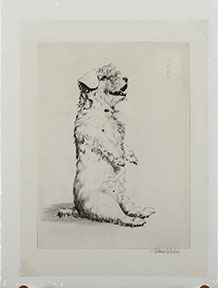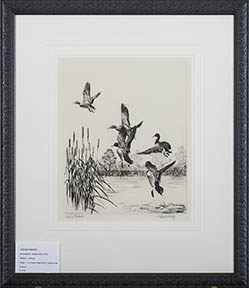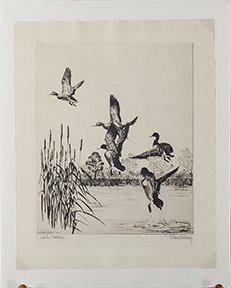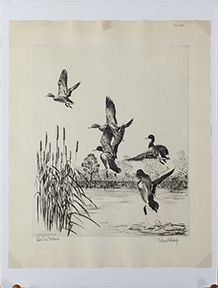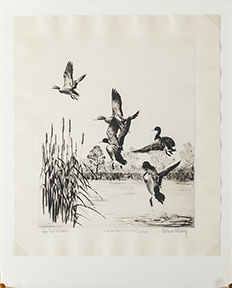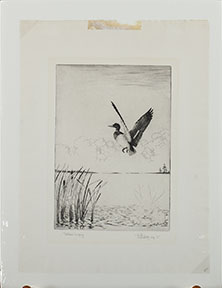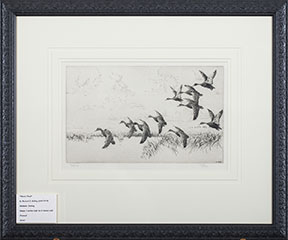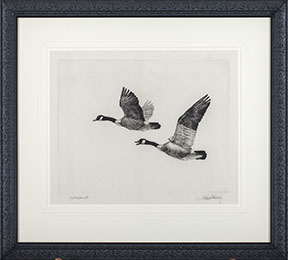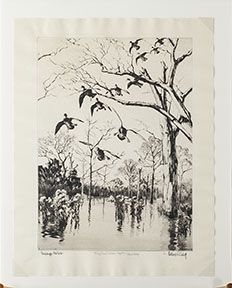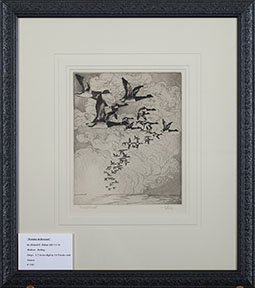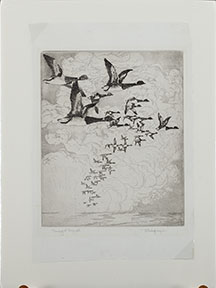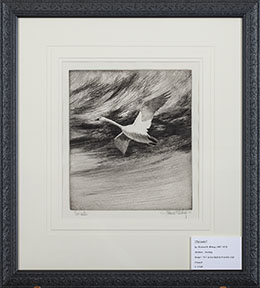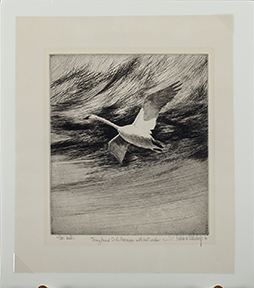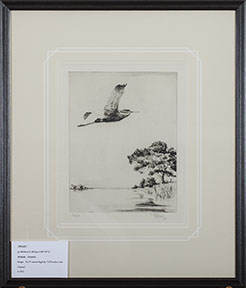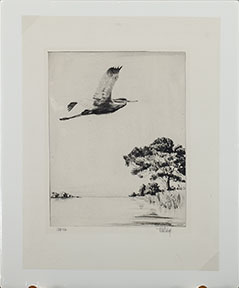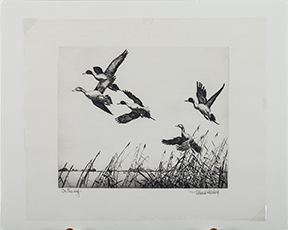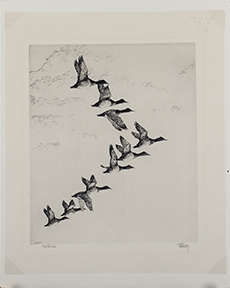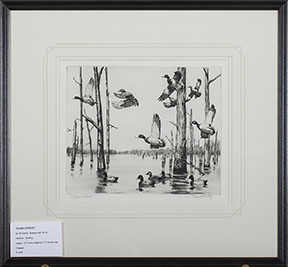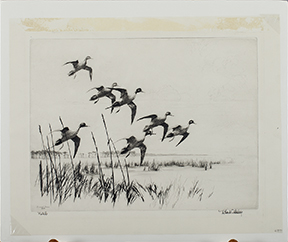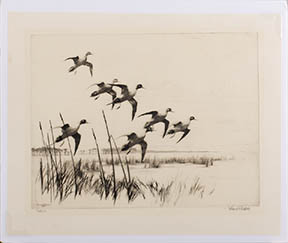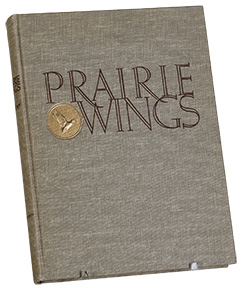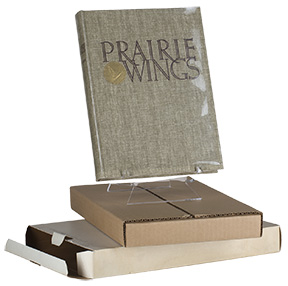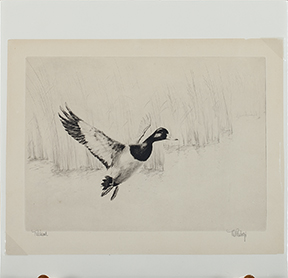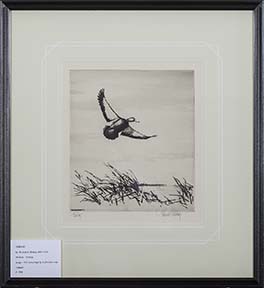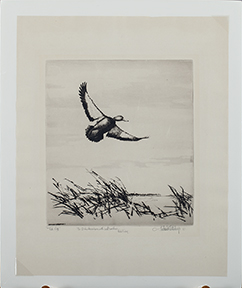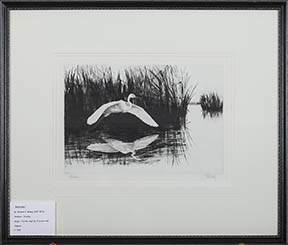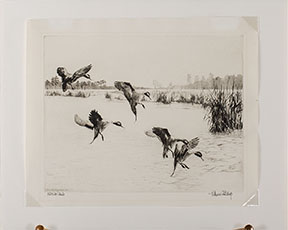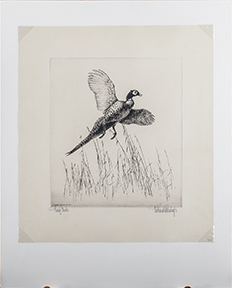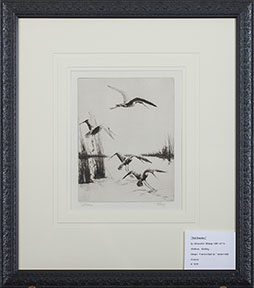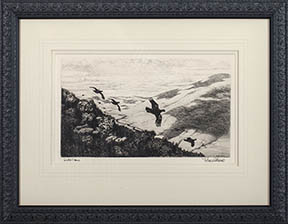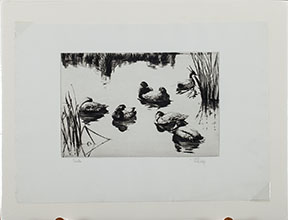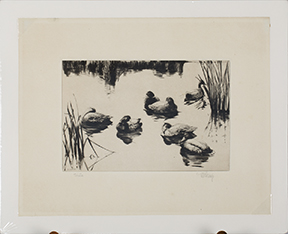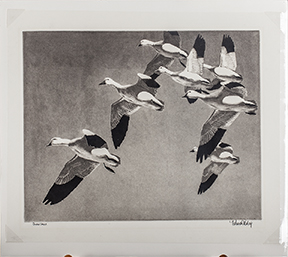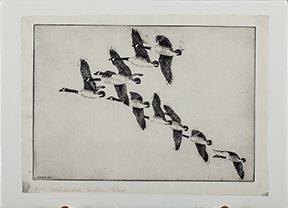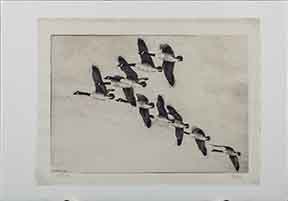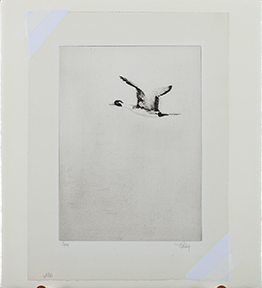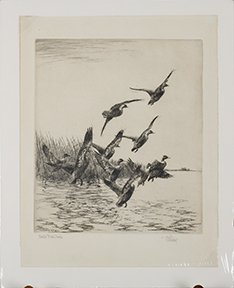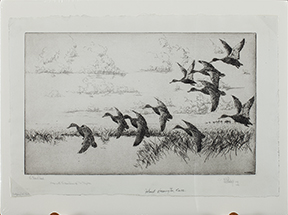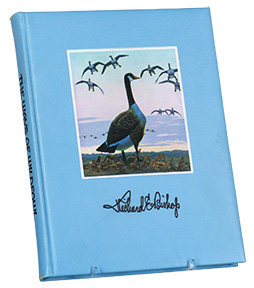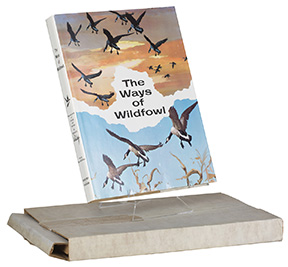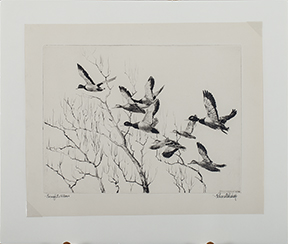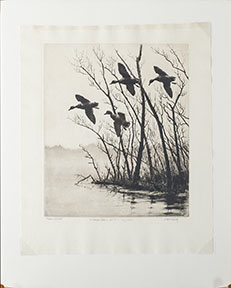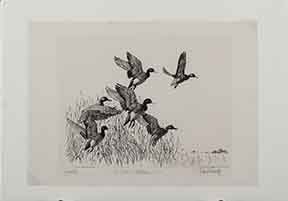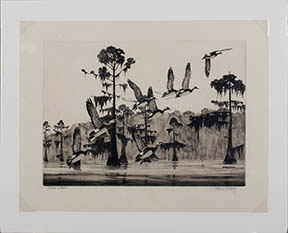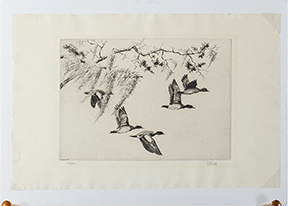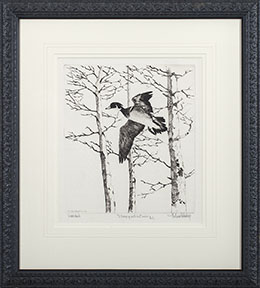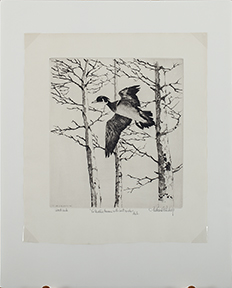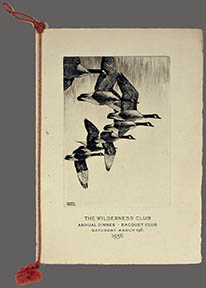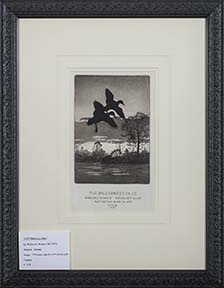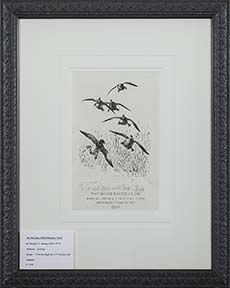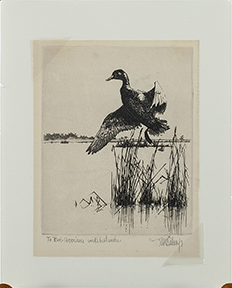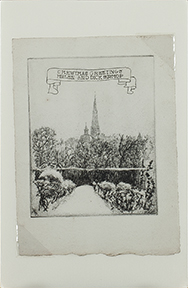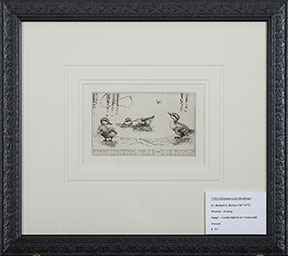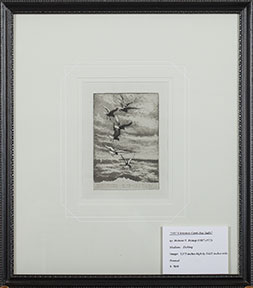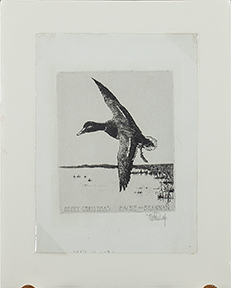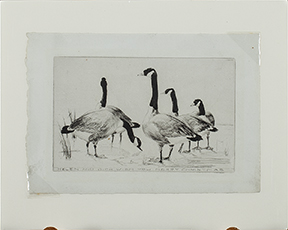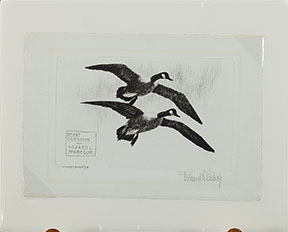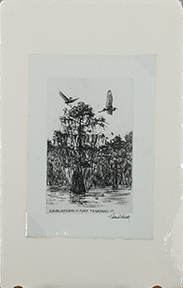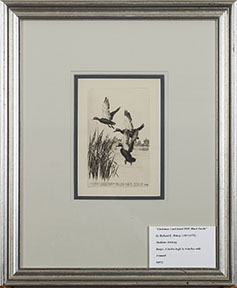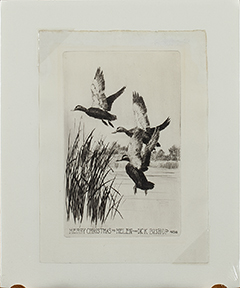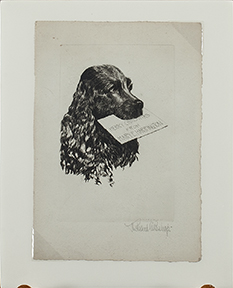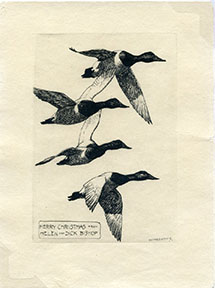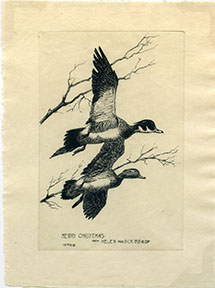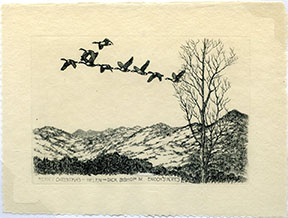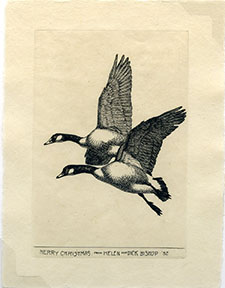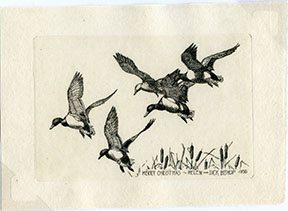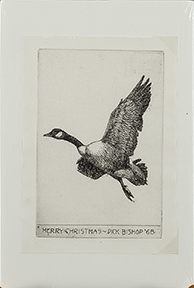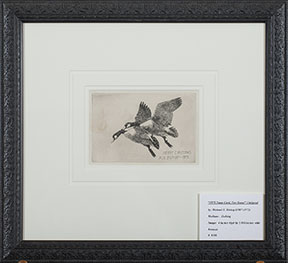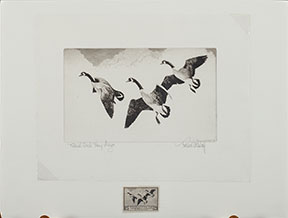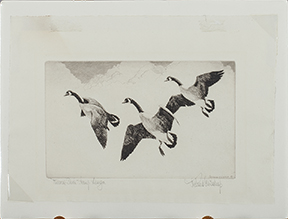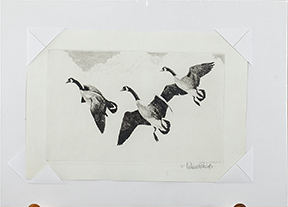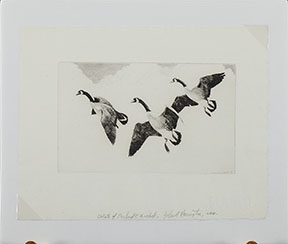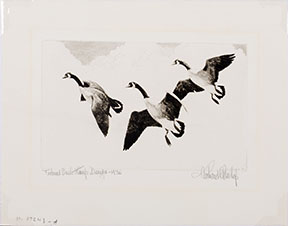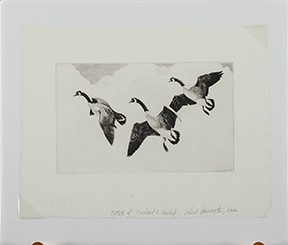Although Richard E. Bishop was best known as an artist, author, photographer, and sportsman, his formal training and first career was in engineering. He was born in Syracuse, New York on May 30, 1887, the son of a railroad man. His father was an ardent gunner of ducks and geese, and indoctrinated his son at a tender age in the religion called waterfowl hunting. After graduating from Syracuse High School, Bishop entered Cornell University and graduated in 1909 with a Masters of Engineering degree and went to work as an electrical engineer for the Cutler-Hammer Manufacturing Company in Milwaukee. After four years in the military, he and his wife moved to Philadelphia where he worked at a manufacturing plant as both Secretary and Sales Manager, positions he held until his retirement from business in 1933. Bishop's career as an artist began, largely by accident, in 1920. He was in charge of a plant that fabricated copper products. Discarded copper printing plates were often brought in, to be melted down and "recycled." This struck Bishop as a waste, so one day he rescued a plate, covered it with wax, and etched a portrait---human, not avian---using a phonograph needle as his stylus. Four years later, his "Canada Geese" won the Charles M. Lea prize awarded by the Philadelphia Print Club.
Although Bishop learned the basics of printmaking from the eminent graphic artist Ernest Roth of the Connecticut School, in most respects he was self-taught. He appropriated the techniques and nuances of the intaglio media---etching, drypoint, and aquatint---through trial and error, relying on his critical, engineer's eye to guide his hand. He built his own printing press for his limited editions, keeping the entire printmaking process in his own hands. In 1936, J. N. "Ding" Darling, then Chief of the U. S. Biological Survey, asked Bishop if his elegant drypoint of Canada Geese, "Coming In," could be the basis for the third Federal Duck Stamp. Bishop agreed, with the stipulation that he be granted complete control over the final design. It marked the first and last time such control was extended. The Bishop stamp was unique in that the image itself was free from lettering; the printing appeared outside the borders. It was also the first stamp to be made into a print. Bishop was an astute businessman, as Malcolm Rowe puts it, "He was never one to miss a profit center."
Richard E. Bishop at Delta, Manitoba in 1949. The photograph was taken by Charles W. Schwartz. Permission was given for the reproduction of the photograph by Michael L. Miller. Thanks Mike. glt Bishop pioneered the use of photography as a source of reference material, an application now taken for granted. "Don't say ducks NEVER do something," he concluded. "Say that they SELDOM do it." He continued to paint virtually until the end, although diabetes robbed him of his once inexhaustible vigor. Richard Bishop died in 1975. Our good and departed friend, Malcolm Rowe. Malcolm was responsible
for much of my "education" on the printmaking works
of Richard E. Bishop. |
|||||
|
View high resolution images of works by Richard
E. Bishop when available. |
|||||
|
|
|||||
|
|
|||||
|
|
|||||
The Wilderness Club |
|||||
Christmas Cards by Richard E. Bishop Early in his career, the artist was commissioned by many families to produce Christmas Cards for them. He also produced and sent Christmas Cards for he and his wife, Helen Bishop. The cards sent by Bishop were not signed in pencil. Those cards produced for other families could have been signed by the artist or signed after receiving them upon request. |
|||||
1936 Federal Duck Stamp Design by Richard E. Bishop "Ding" Darling and Frank Benson saw the pair of etchings by Bishop entitled "Coming In" and "Getting Out." They asked him to design the stamp for the third Federal Duck Stamp program in 1936.
|
|||||
Have questions about these images? E-mail Meadowlark Gallery!!Home Page / Biography Library / Bronze / Collectibles / Etchings / Paintings / Pen and Ink / Graphite / Working Decoys Gallery Credentials / Firearms / Triangle Z Ranch Furniture / Customer Percs |
|||||
